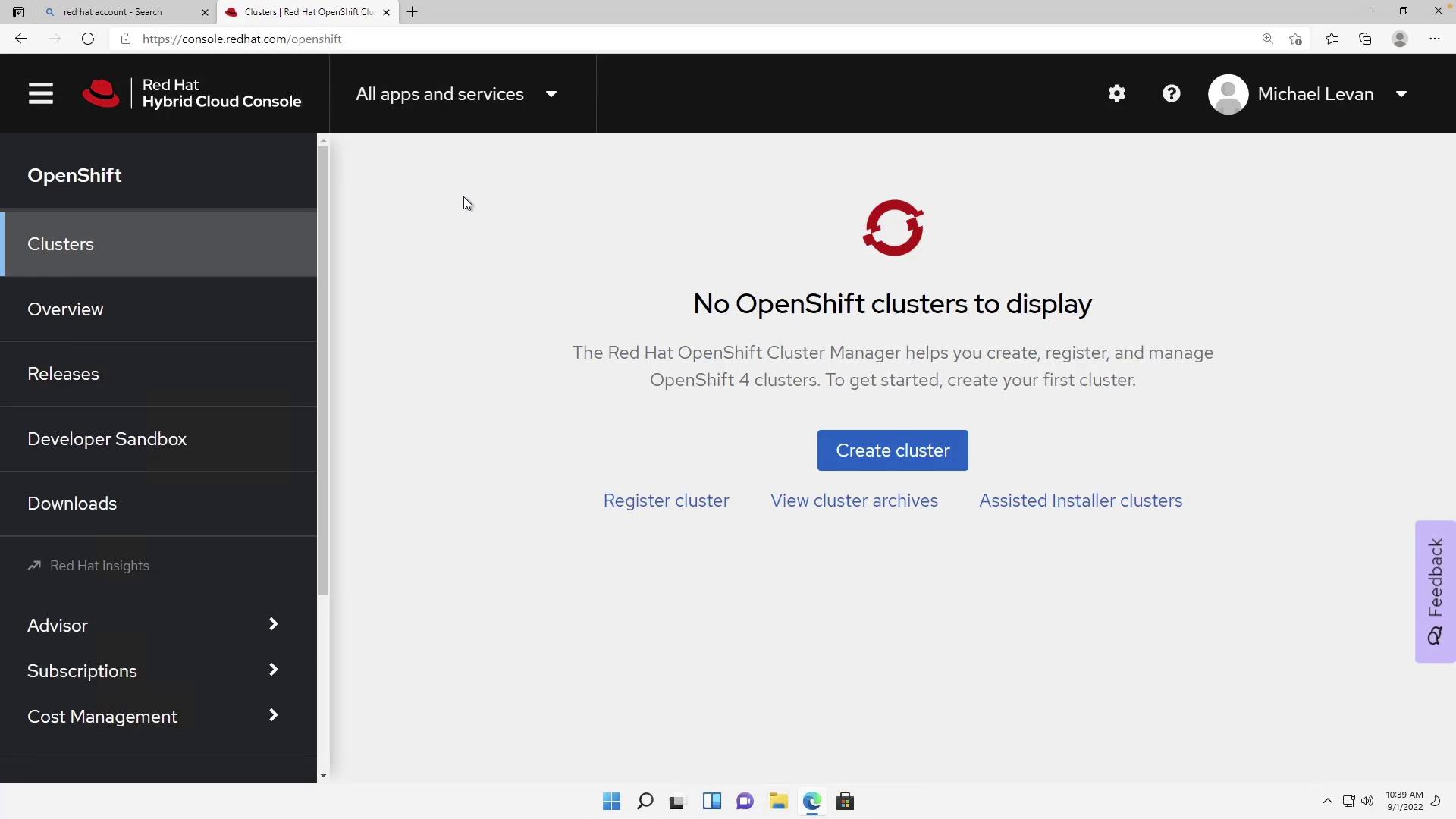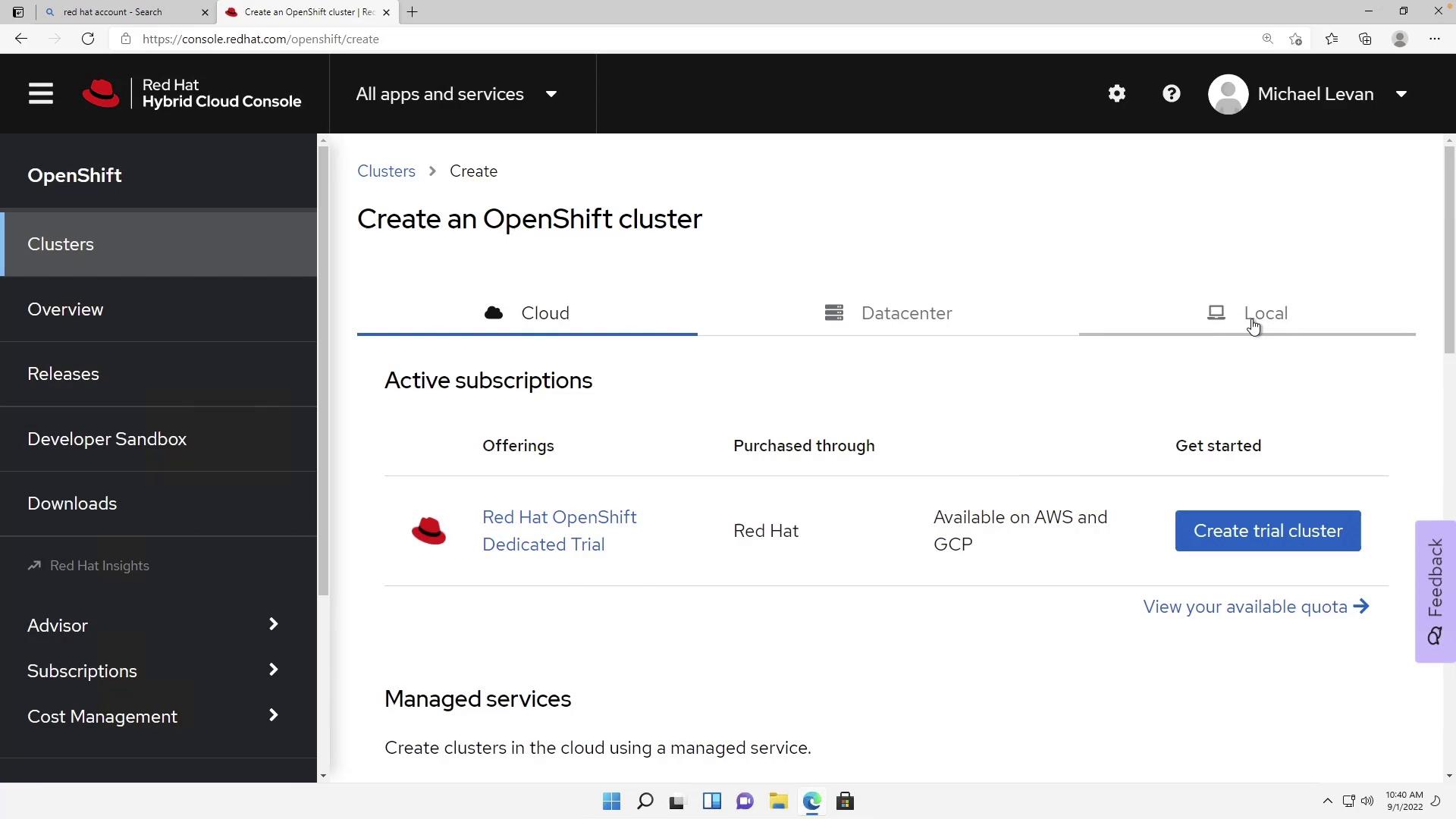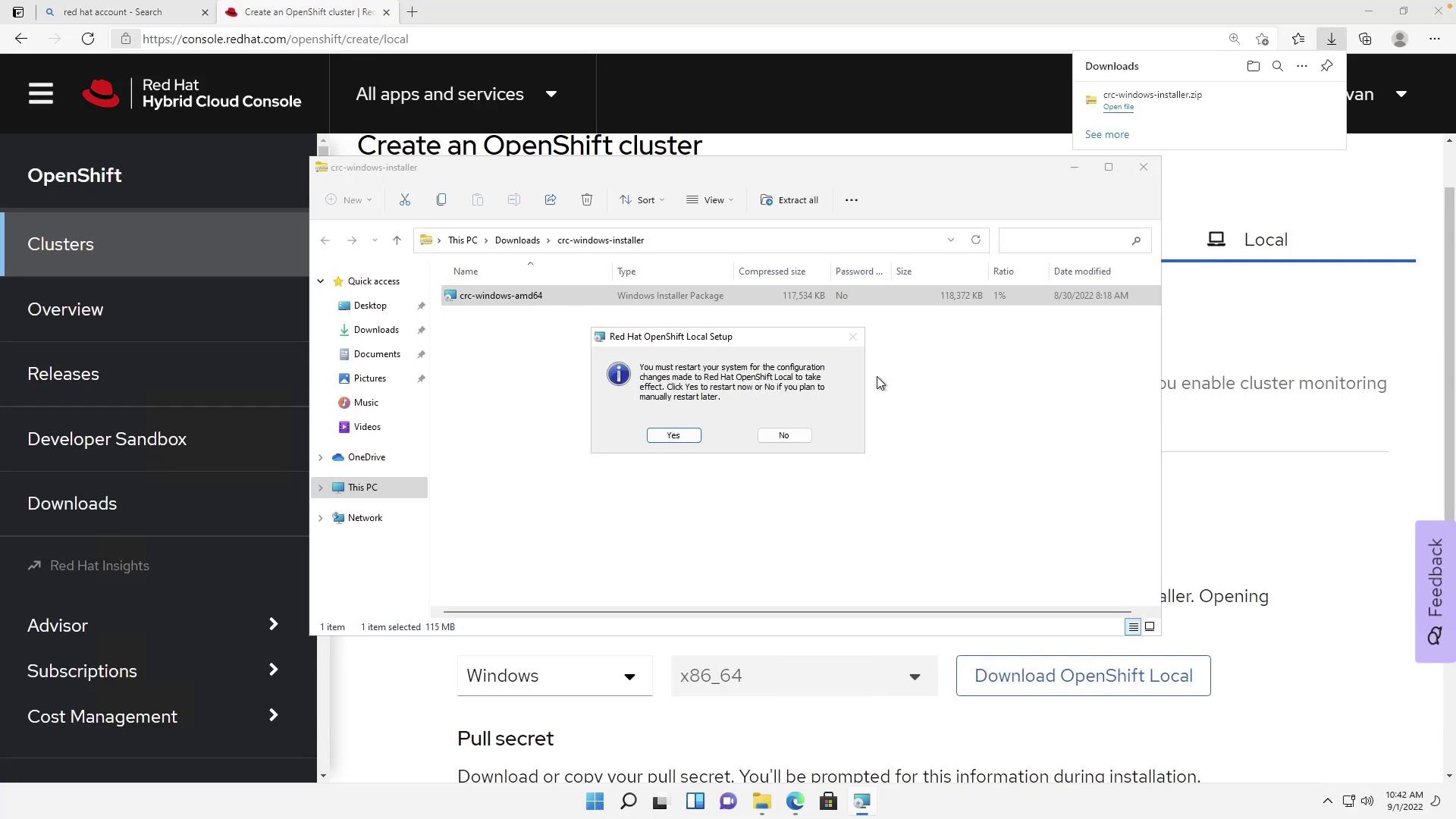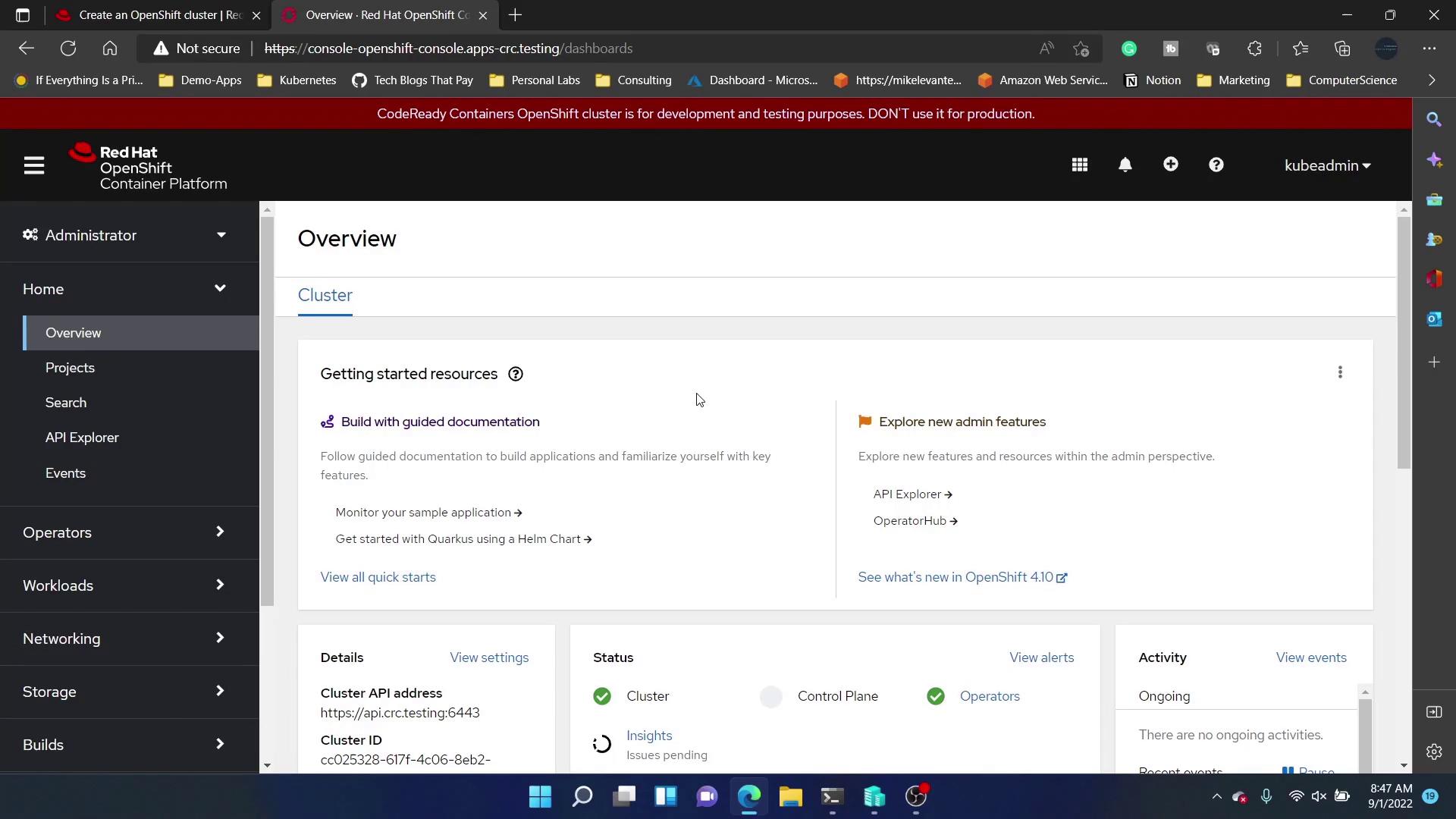OpenShift 4
Getting Started with Openshift
Demo Install Single Node using CRC
After configuring your Red Hat account, navigate to Red Hat OpenShift. You should see a page similar to the one below:

In this lesson, we will install CodeReady Containers (CRC), a tool that functions similarly to Docker Desktop by running a local OpenShift cluster. Once launched from your taskbar, CRC lets you use OpenShift for local development—comparable to Docker Desktop or Minikube.
Create a Local Cluster
Begin by clicking on Create Cluster and select Local as your deployment option:

You will now see the "Red Hat OpenShift Local" page with a download button. Depending on your operating system (Linux, macOS, or Windows), click the appropriate download button:

Installing CRC on Windows
For Windows users, click Download OpenShift Local and run the installer. Follow the installation prompts by clicking Next until you reach the Install button. After installation, you will be prompted to restart your computer:

Click Yes to restart your system. After restarting, open PowerShell and maximize the window. You should see a prompt similar to the following:
PS C:\Users\mike>
Set Up CRC Prerequisites
Verify that the CRC CLI is installed by typing crc. Then, run the setup command to install all prerequisites:
crc setup
When prompted for anonymous usage statistics, type N to decline:
CRC is constantly improving and we would like to know more about usage (more details at https://developers.redhat.com/article/tool-data-collection)
Your preference can be changed manually if desired using 'crc config set consent-telemetry <yes/no>'
Would you like to contribute anonymous usage statistics? [y/N]: N
During the setup process, CRC configures several prerequisites. On Windows, CRC leverages Hyper-V for virtualization (similar to how Docker Desktop runs a virtual machine in the background). This process may download a large bundle (approximately 14 GiB) and configure multiple components, including:
- Hyper-V settings (ensuring Hyper-V is enabled and that your user is in the required groups).
- The CRC bundle for Hyper-V.
- The daemon task (which installs and runs as needed).
The output will resemble the example below:
PS C:\Users\mike> crc setup
INFO Using bundle path C:\Users\mike\.crc\cache\crc_hyperv_4.11.1_amd64.crcbundle
INFO Checking if current user is in Hyper-V Admins group
INFO Checking if C:\Users\mike\.crc\cache\crc_hyperv_4.11.1_amd64.crcbundle exists
INFO Getting bundle for the CRC executable
INFO Downloading crc_hyperv_4.11.1_amd64.crcbundle
3.24 GiB / 3.24 GiB [-------------------------------------] 100.00% 11.08 MiB p/s
INFO Uncompressing C:\Users\mike\.crc\cache\crc_hyperv_4.11.1_amd64.crcbundle
crc.vhdx: 14.01 GiB / 14.01 GiB [-------------------------------------] 100.00%
INFO Checking if the daemon task is installed
INFO Installing the daemon task
INFO Checking if the daemon task is running
INFO Running the daemon task
INFO Checking admin helper service is running
Your system is correctly setup for using CRC. Use 'crc start' to start the instance
Note
Ensure that Hyper-V is enabled on your Windows machine before running the setup command.
Starting the CRC Cluster
Clear your screen and start the CRC cluster with:
crc start
Starting the cluster may take around 15 minutes as the virtual machine fully initializes. Once the cluster is running, the CRC icon will appear in your Windows taskbar. Right-click the icon and select Open Console to view your CRC console credentials.
Open a terminal and execute the command provided by the console to reveal your credentials. You might see output similar to this:
PowerShell 7.1.3
Copyright (c) Microsoft Corporation.
https://aka.ms/powershell
Type 'help' to get help.
A new PowerShell stable release is available: v7.2.6
Upgrade now, or check out the release page at:
https://aka.ms/PowerShell-Release?tag=v7.2.6
The output displays credentials for both the administrator and developer users. For example:
INFO 2 operators are progressing: kube-apiserver, openshift-controller-manager
INFO 2 operators are progressing: authentication, openshift-controller-manager
...
Started the OpenShift cluster.
The server is accessible via web console at:
https://console-openshift-console.apps-crc.testing/
Log in as administrator:
Username: kubeadmin
Password: IxAvf-CKLZp-aqT8d-niTJV
Log in as user:
Username: developer
Password: developer
Use the 'oc' command line interface:
PS> & crc oc-env | Invoke-Expression
PS> oc login -u developer https://api.crc.testing:6443
PS C:\Users\mleva>
Copy the password provided for the "kubeadmin" account to log in as the administrator.

Verifying Your Installation
After logging in, the OpenShift dashboard will be displayed, confirming your successful connection to the local OpenShift cluster.

This completes the setup of CRC on your local machine. You are now ready to develop and test locally with OpenShift.
Happy Coding!
Watch Video
Watch video content